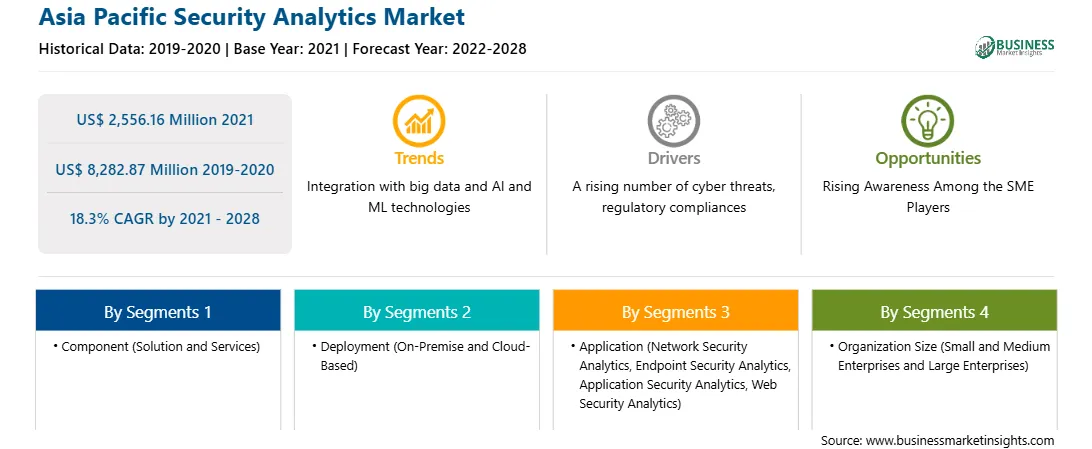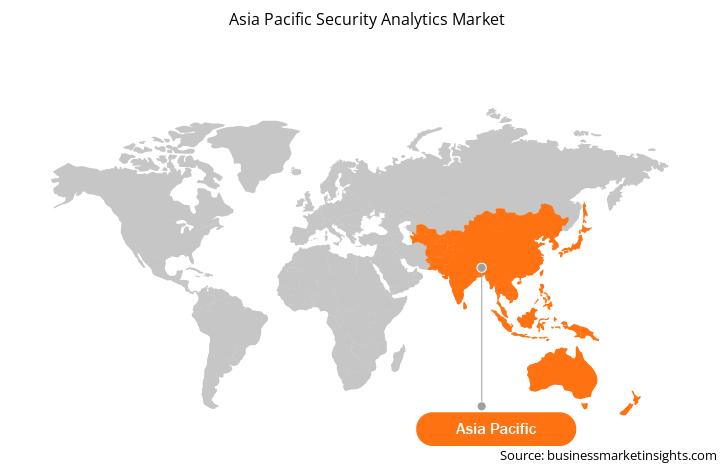Over the past few years, big data analytics has become a significant research interest among practitioners and researchers. Swift growth in data volume and complexity, owing to the rising traffic of mobile data and cloud computing and increasing development and uptake of new technologies, such as artificial intelligence (AI) and the Internet of things (IoT), is propelling the demand for big data analytics technologies. These technologies have an enormous potential to transform the business entirely. Big data platforms effectively analyse the vast structured and unstructured data sets. Big data analytics technology helps gain actionable insights from the structured and massive data quantity available in unstructured data from various sources, such as the web and social media. Big data analysis's insight helps security analytics gather, categorize, and analyse data collected from network devices to detect advanced threats, thereby, creating lucrative opportunities for the security analytics market.
In 2020, APAC was greatly affected by the COVID-19 outbreak. China homes the most significant population worldwide, thereby imposing greater risk on many individuals. It is also a world leader of many global brands. According to the Organization for Economic Co-operation and Development (OECD), the pandemic has also affected other significant economies outside China, such as India, Australia, and Japan, and is experiencing low inflation. Further, in 2021, the offices have resumed their operations with the release of lockdown restrictions and an ongoing vaccination process.
In the wake of COVID-19, businesses are sensitive to anything that could damage their reputation. Businesses understand that they cannot afford any data breaches or security breaches that damage their reputation. There is speculation that the work-at-home modality is expected to become the new normal for many people. Therefore, businesses present in the region are expected to invest more money and energy into identifying intelligent management solutions tailored toward managing work-from-home security threats. Thus, the security analytics market is estimated to experience substantial growth over the next few years.
With the new features and technologies, vendors can attract new customers and expand their footprints in emerging markets. This factor is likely to drive the APAC security analytics market. The APAC security analytics market is expected to grow at a good CAGR during the forecast period.
Strategic insights for the Asia Pacific Security Analytics provides data-driven analysis of the industry landscape, including current trends, key players, and regional nuances. These insights offer actionable recommendations, enabling readers to differentiate themselves from competitors by identifying untapped segments or developing unique value propositions. Leveraging data analytics, these insights help industry players anticipate the market shifts, whether investors, manufacturers, or other stakeholders. A future-oriented perspective is essential, helping stakeholders anticipate market shifts and position themselves for long-term success in this dynamic region. Ultimately, effective strategic insights empower readers to make informed decisions that drive profitability and achieve their business objectives within the market.

| Report Attribute | Details |
|---|---|
| Market size in 2021 | US$ 2,556.16 Million |
| Market Size by 2028 | US$ 8,282.87 Million |
| Global CAGR (2021 - 2028) | 18.3% |
| Historical Data | 2019-2020 |
| Forecast period | 2022-2028 |
| Segments Covered |
By Component
|
| Regions and Countries Covered | Asia-Pacific
|
| Market leaders and key company profiles |
The geographic scope of the Asia Pacific Security Analytics refers to the specific areas in which a business operates and competes. Understanding local distinctions, such as diverse consumer preferences (e.g., demand for specific plug types or battery backup durations), varying economic conditions, and regulatory environments, is crucial for tailoring strategies to specific markets. Businesses can expand their reach by identifying underserved areas or adapting their offerings to meet local demands. A clear market focus allows for more effective resource allocation, targeted marketing campaigns, and better positioning against local competitors, ultimately driving growth in those targeted areas.

The Asia Pacific Security Analytics Market is valued at US$ 2,556.16 Million in 2021, it is projected to reach US$ 8,282.87 Million by 2028.
As per our report Asia Pacific Security Analytics Market, the market size is valued at US$ 2,556.16 Million in 2021, projecting it to reach US$ 8,282.87 Million by 2028. This translates to a CAGR of approximately 18.3% during the forecast period.
The Asia Pacific Security Analytics Market report typically cover these key segments-
The historic period, base year, and forecast period can vary slightly depending on the specific market research report. However, for the Asia Pacific Security Analytics Market report:
The Asia Pacific Security Analytics Market is populated by several key players, each contributing to its growth and innovation. Some of the major players include:
The Asia Pacific Security Analytics Market report is valuable for diverse stakeholders, including:
Essentially, anyone involved in or considering involvement in the Asia Pacific Security Analytics Market value chain can benefit from the information contained in a comprehensive market report.